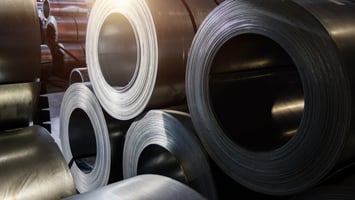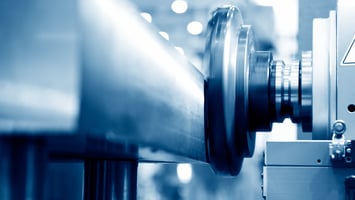Metal spinning has been a crucial component of manufacturing for centuries. The earliest examples...
Kryton Metals Blog
What To Consider for Your Company’s Metal Spinning Design
.jpg)
.jpg?width=820&name=metal-spinning%20(2).jpg)
Metal components are produced in a variety of shapes and sizes, each tailored for specific functions. Some designs are straightforward, while others need to adhere to specific industry standards and specifications. So, how do manufacturers consistently produce high-quality, cost-effective metal parts while maximizing efficiency? The key lies in pre-production planning and consideration of various factors that influence the production process.
A variety of factors contribute to the overall cost of metal spinning, all of which should be taken into account during the design phase. These can range from the complexity of the design, the choice of material, the quantity of the order, to the specific tolerances required. In this article, we will dive deep into these cost-influencing factors in detail, providing you with the essential knowledge for effective metal spinning design planning.
Metal spinning, particularly when executed at high speeds with modern machinery, is an efficient method for shaping metals or alloys. It's generally more cost-effective than certain advanced tooling techniques due to its relatively low-cost tooling and setup. However, it does come with some disadvantages, such as potential limitations in the complexity of shapes that can be produced or in the thickness of material that can be worked.
The balance of benefits and drawbacks in relation to cost will depend on the specifics of your project and the aspects you prioritize. Considering the following factors can also help you manage the budget and monitor the outcomes:
Design Complexity
Metal fabrication is inherently complex, involving a series of precise steps. The complexity escalates when dealing with intricate geometries, which can subsequently elevate costs and extend lead times. The more steps your order requires - from cutting and bending to joining and finishing - the longer and costlier the process becomes. However, experts in progressive metal forming can leverage sophisticated systems and techniques to streamline the process, reducing costs and shortening delivery times.
DID YOU KNOW: Rapid prototyping is a valuable tool in the metal fabrication industry. It allows for cost-effective troubleshooting of designs, enabling manufacturers to identify and rectify potential issues before they escalate into more costly problems in the production stage.
Material Requirements
The materials used in your project will also influence cost, processing time, and the final product quality. This is because some metals and alloys are more difficult to work with than others. For instance, some metals might necessitate additional steps or specific methods to bend, shape, or assemble. Additionally, some orders might require finishing processes or other specific procedures to comply with ISO standards, client specifications, or other project objectives.
DID YOU KNOW: Global supply chain disruptions can have a significant impact on the cost of metal fabrication, affecting everything from the price of raw materials to delivery times.
Lead Times
The time frame required for the design and fabrication of metal components can significantly influence the total cost of your project. Many reputable metalworking facilities plan their projects well in advance to optimize workflow and prevent scheduling conflicts. However, they may also have the capacity to accommodate small-batch orders or expedited services, although these options can result in higher costs due to the need for rapid turnaround. Thus, the closer your deadline for the final products, the higher your costs are likely to be.
DID YOU KNOW: Early and thorough planning can help manufacturers optimize resources when producing metal spinning products, leading to cost savings and efficiency improvements.
Want to know more about the factors that affect the price of metal spinning services? Talk to your team or reach out to a high-speed metal fabrication expert.
Three Things to Consider About Your Metal Spinning Designs
Designing a functional and efficient metal spinning product goes beyond just considering design complexity, materials, and lead times. The fabrication process for spun metal parts requires a high-speed CNC lathe to ensure precision, regardless of the product's final application. Professionals in the field also recognize the importance of considering the following aspects when planning a project:
- Tooling Costs – Customized tooling is often employed for metal spinning projects. The selection of high-quality mandrels is crucial to achieve optimal results.
- Tolerance Requirements – Precision often comes at a premium, both in terms of cost and time. Tighter tolerances may take longer to achieve and could potentially increase costs. While metal spinning can cause the material to thin and stretch, modern techniques and machinery largely mitigate irregularities.
- Collaboration & Accessibility – Effective communication with your engineering team is vital. A collaborative approach ensures excellence is maintained throughout each phase of production.
Creating precision metal spinning products requires careful planning and extensive knowledge. A competent team should be able to advise you on whether a different material or approach might yield better results. When working with professionals who understand your needs, you can expect to receive high-speed, cost-effective metal spinning services.
How To Cut Costs on High-Speed Metal Fabrication
Metal spinning is a versatile and complex process that provides solutions to a variety of design challenges. It can accommodate a range of material thicknesses and is adaptable to evolving ISO regulations. Despite challenges posed by supply chain disruptions and global climate change, there are strategies to conserve resources and maintain competitiveness.
Innovation often begins with rapid prototyping and cost-effective fabrication strategies. Without an efficient approach, the production of metal spinning products can become costly. Here are a few strategies for cost-effective metal spinning:
- Create Prototypes – Testing different design elements in the prototyping stage can help determine which features balance function with cost. Eliminate elements that add unnecessary expense.
- Use Local Sources – Engaging a local sheet metal fabrication expert can help streamline your process. Whether you're planning for mass production or small-batch orders, local expertise can be invaluable.
- Pool Your Knowledge – Regular team meetings to review concepts, monitor progress, and brainstorm ideas can enhance efficiency and effectiveness. Collaborative problem-solving can lead to cost savings without sacrificing quality.
- Be Sustainable – Utilize high-speed CNC lathes to reduce lead times and enhance precision. Aim for sustainable practices in your fabrication process to minimize waste.
Metal spinning offers a unique solution for engineers looking to save time and money. High-speed CNC lathes can form and shape sheet metal using techniques that help reduce manufacturing costs, making metal spinning a cost-effective choice for many applications.
Consider the essential factors that affect prices, and then consult your crew at KRYTON Engineered Metals for more information.



